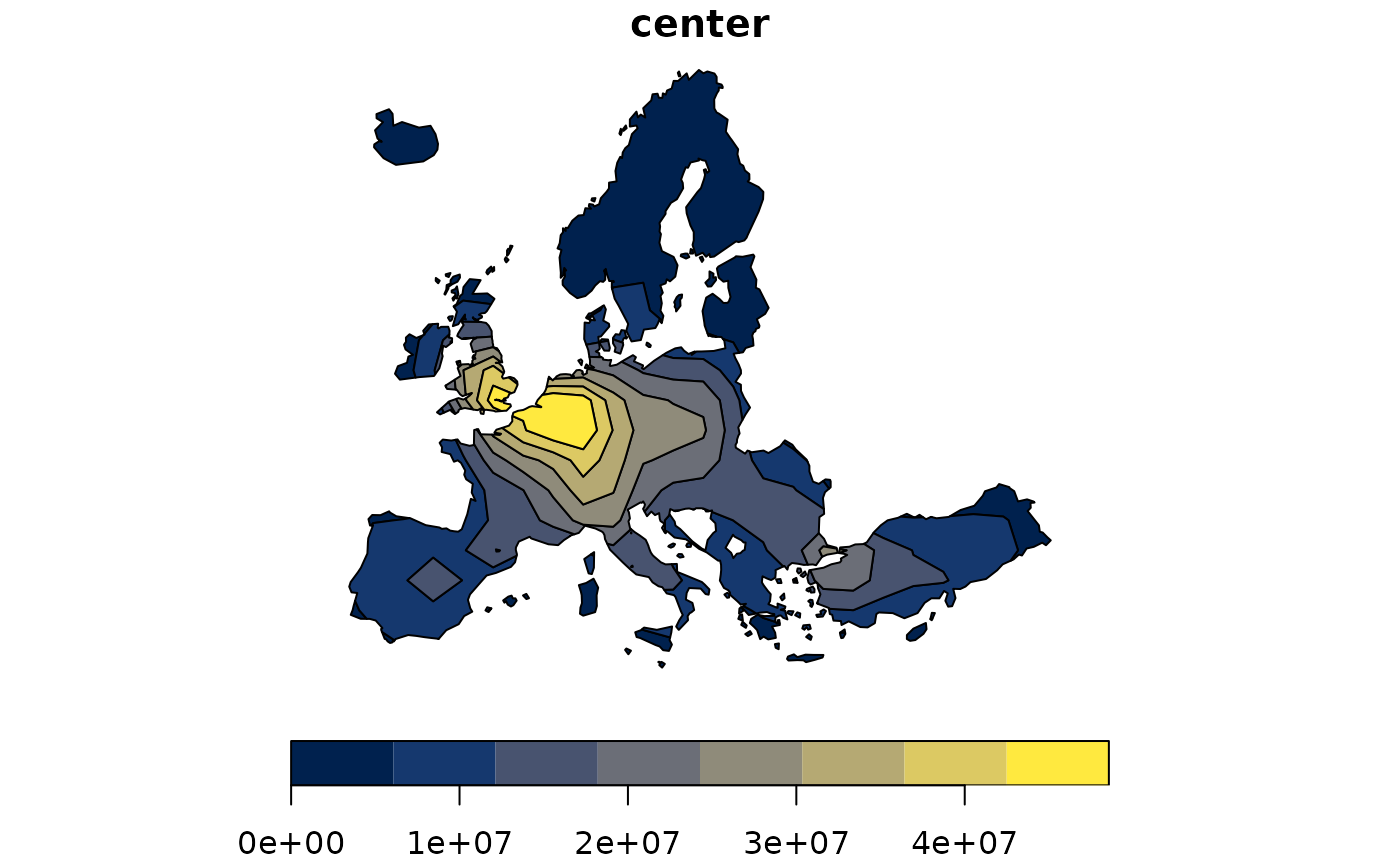This function computes the potential model as defined by J.Q. Stewart (1941).
potential(x, y, d, var, fun, span, beta)Arguments
- x
an sf object (POINT), the set of known observations to estimate the potentials from.
- y
an sf object (POINT), the set of unknown units for which the function computes the estimates.
- d
a distance matrix between known observations and unknown units for which the function computes the estimates. Row names match the row names of
xand column names match the row names ofy.dcan contain any distance metric (time distance or euclidean distance for example).- var
names of the variables in
xfrom which potentials are computed. Quantitative variables with no negative values.- fun
spatial interaction function. Options are "p" (pareto, power law) or "e" (exponential). For pareto the interaction is defined as: (1 + alpha * mDistance) ^ (-beta). For "exponential" the interaction is defined as: exp(- alpha * mDistance ^ beta). The alpha parameter is computed from parameters given by the user (
betaandspan).- span
distance where the density of probability of the spatial interaction function equals 0.5.
- beta
impedance factor for the spatial interaction function.
Value
If only one variable is computed a vector is returned, if more than one variable is computed a matrix is returned.
References
STEWART, JOHN Q. 1941. "An Inverse Distance Variation for Certain Social Influences." Science 93 (2404): 89–90. doi:10.1126/science.93.2404.89 .
Examples
library(sf)
y <- create_grid(x = n3_poly, res = 200000)
d <- create_matrix(n3_pt, y)
pot <- potential(
x = n3_pt, y = y, d = d, var = "POP19",
fun = "e", span = 200000, beta = 2
)
y$OUTPUT <- pot
equipot <- equipotential(y, var = "OUTPUT", mask = n3_poly)
plot(equipot["center"], pal = hcl.colors(nrow(equipot), "cividis"))
